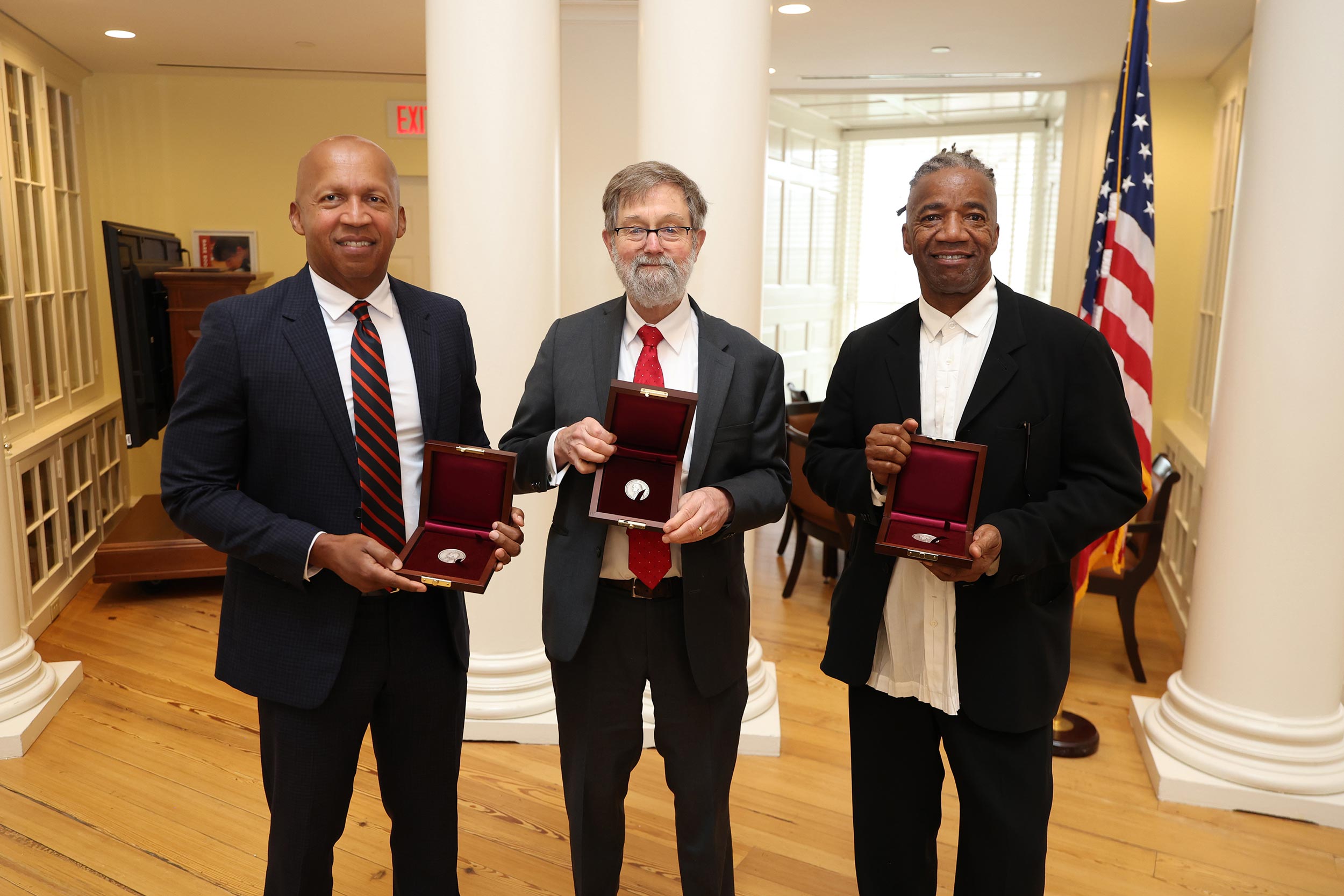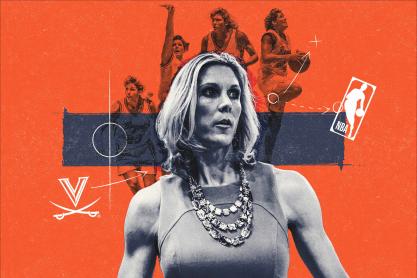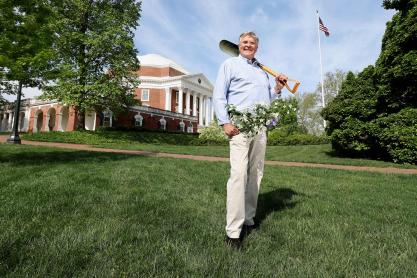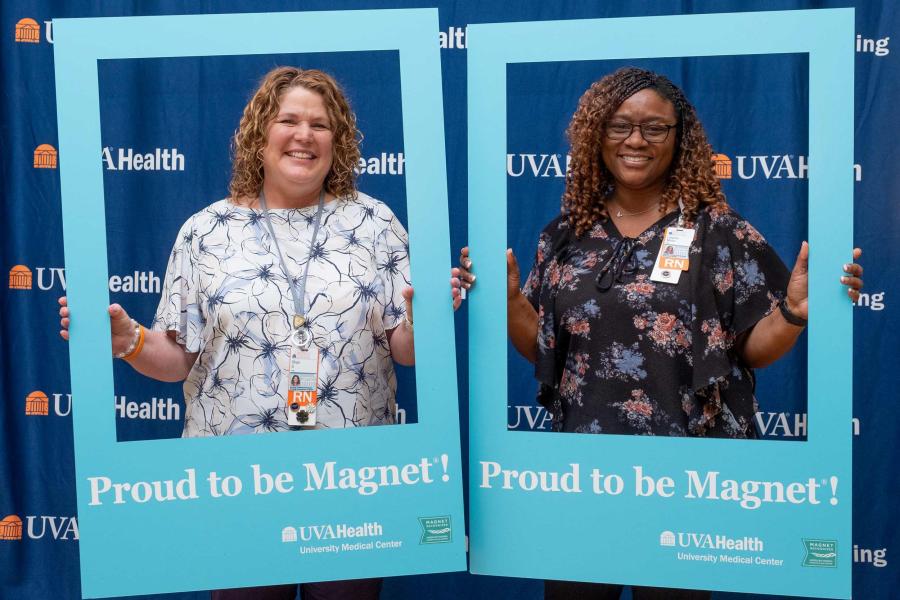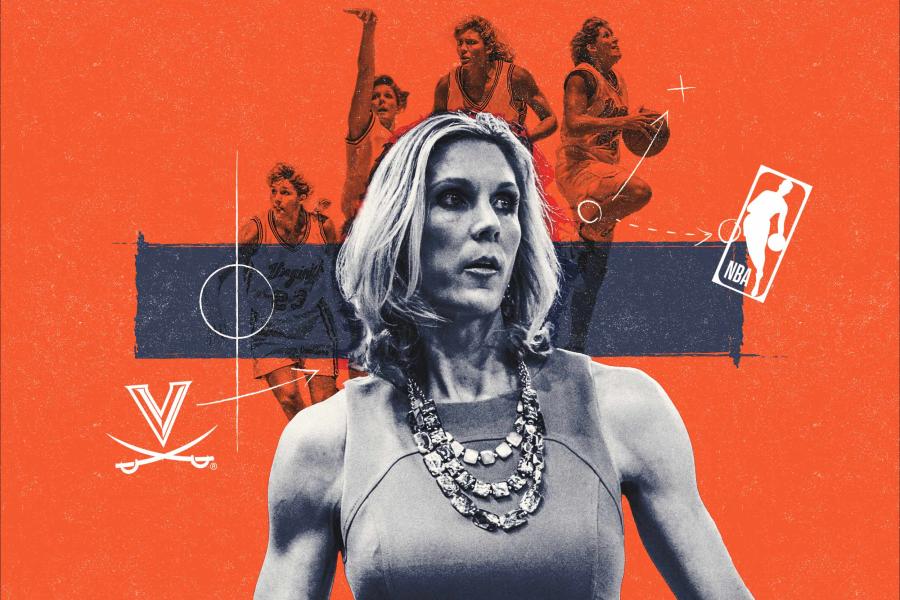A crowd of about 75 friends and colleagues donned raincoats and hoisted umbrellas Friday on the Grounds of the University of Virginia as they gathered around Colette Sheehy.
Sheehy, the senior vice president for operations and state government relations, will soon retire after nearly 43 years at the University. On Friday, she was honored with the planting a blight-resistant Jefferson elm in her name, placed between the Rotunda and Brooks Hall, part of UVA’s Founder’s Day celebration recognizing Thomas Jefferson’s April 13 birthday.
UVA President Jim Ryan compared Sheehy to fellow Freehold, New Jersey, native Bruce Springsteen. Both, Ryan said, had meteoric careers; Ryan noted Sheehy started at UVA in 1982 as a budget analyst, rising to become one of the first two women ever appointed a vice president at UVA.
“Colette, we plant this tree to remember all you have given over the arc of your decades of service to UVA,” Ryan said. “And we plant it so that whenever you return to this spot, which we hope will be often, you will be reminded of the roots that grow ever stronger here on the Grounds that you shaped.”
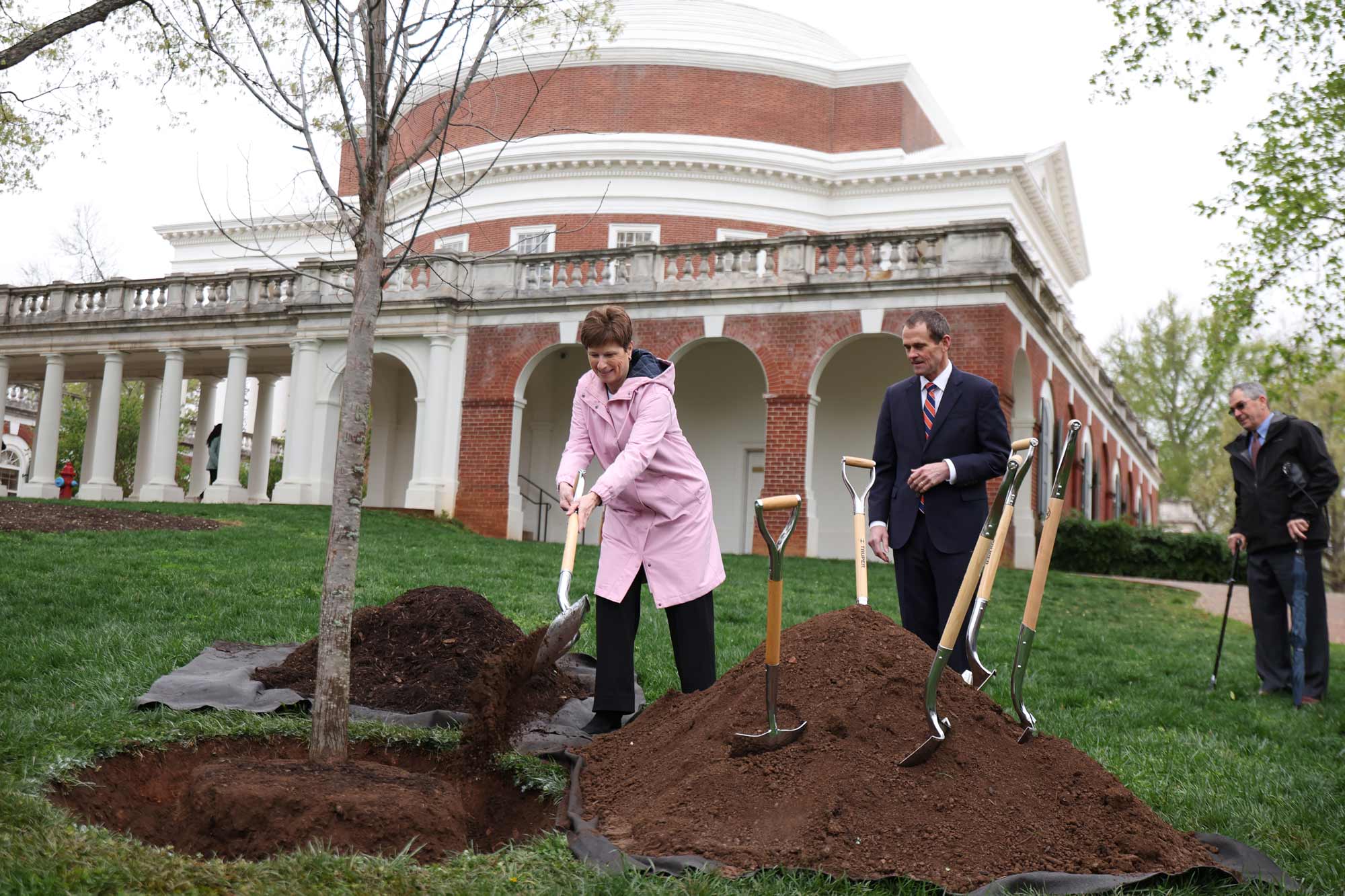
Colette Sheehy, the senior vice president for operations and state government relations, and University President Jim Ryan shovel dirt around the roots of a Jefferson elm planted on Founder’s Day in Sheehy’s honor. (Photo by Matt Riley, University Communications)
Sheehy said the tree planting was personal for her because she put down roots in the community.
“A tree doesn’t grow overnight,” she said. “It takes time, care and patience. You have to trust that what you’re doing today matters down the line. That’s what we all do here – faculty, staff, students, alumni. We plant things we may never fully see. And we trust that the next generation will carry it forward. In today’s challenging times, we may need to remind ourselves of that purpose.”
Sheehy, Ryan and most of the crowd then ambled to the Rotunda, shaking off umbrellas as they ascended its marble steps for the second half of the Founder’s Day celebration.
Inside, UVA and Thomas Jefferson Foundation leaders presented Jefferson Medals to three national luminaries in the fields of architecture, law and citizen leadership: Walter J. Hood, Edwin S. Kneedler and Bryan Stevenson, respectively.
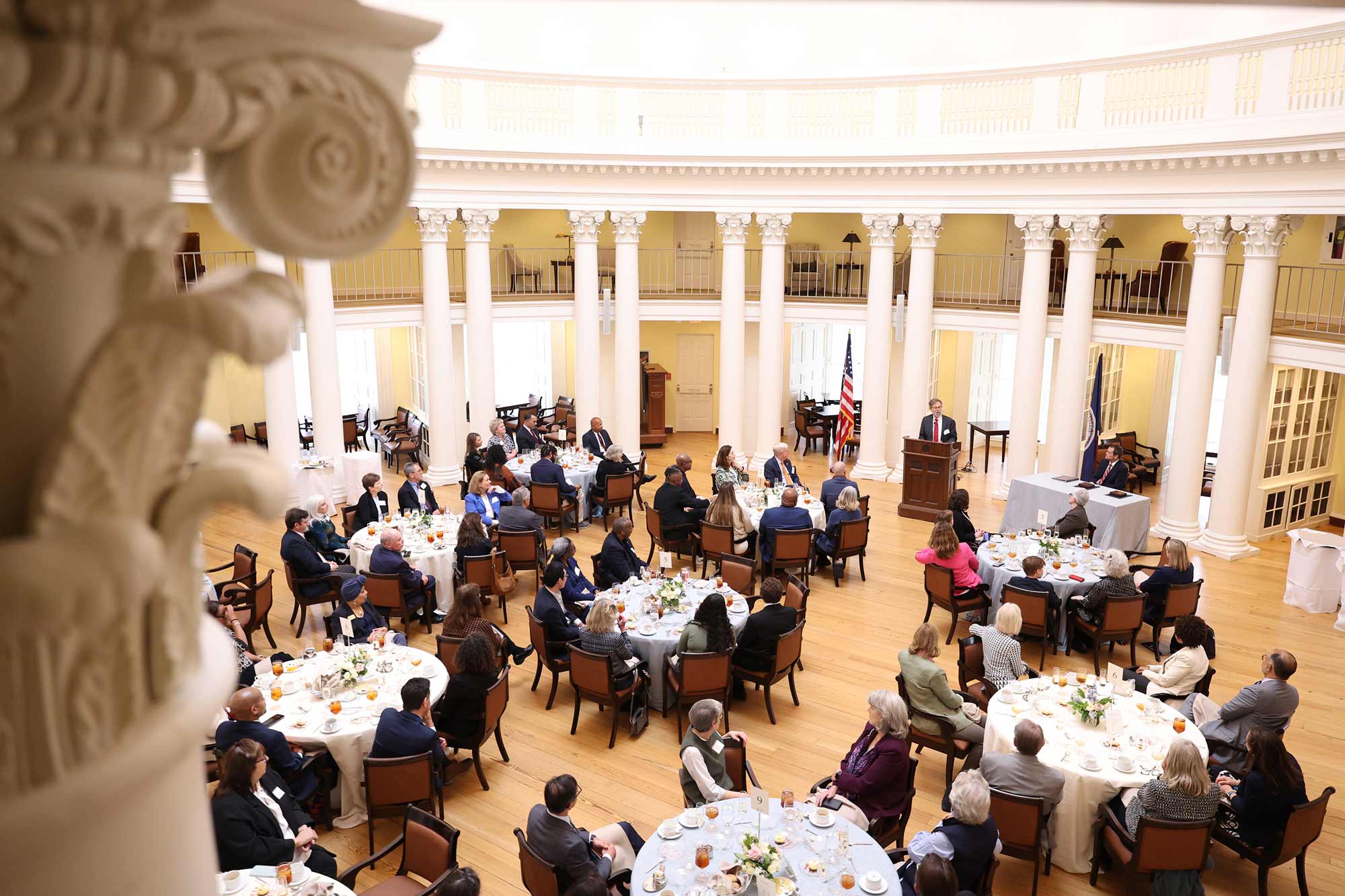
Kneedler speaks to a crowd of several dozen gathered in the Rotunda Dome Room. (Photo by Matt Riley, University Communications)
“As you might know, UVA does not grant honorary degrees,” Ryan said. “So, these medals represent the highest external awards that UVA gives.”
Hood, an architect, specializes in reshaping contemporary places without erasing their history. One example is on Grounds – the Kitty Foster Homestead and Cemetery – honoring a free African American seamstress who lived in a modest home near what is now Nau Hall in the 1800s. The site, a mix of historic preservation and modern architecture, includes a metal form called a “shadow catcher” rising above the remnants, projecting a shadow roughly outlining the footprint of the Foster home.
“I owe it to UVA for allowing me to do one of my first pieces, which is the Kitty Foster site,” Hood said.
The Jefferson Medal winner for law, Edwin S. Kneedler, is a 1974 UVA School of Law graduate who has argued more than 150 cases before the United States Supreme Court, “a remarkable achievement unmatched by any living lawyer,” Law School Dean Leslie Kendrick noted.
Kneedler, a government lawyer whose career has spanned 10 presidential administrations, told the assembled crowd he is proud to have practiced the kind of law that Jefferson envisioned centuries ago.
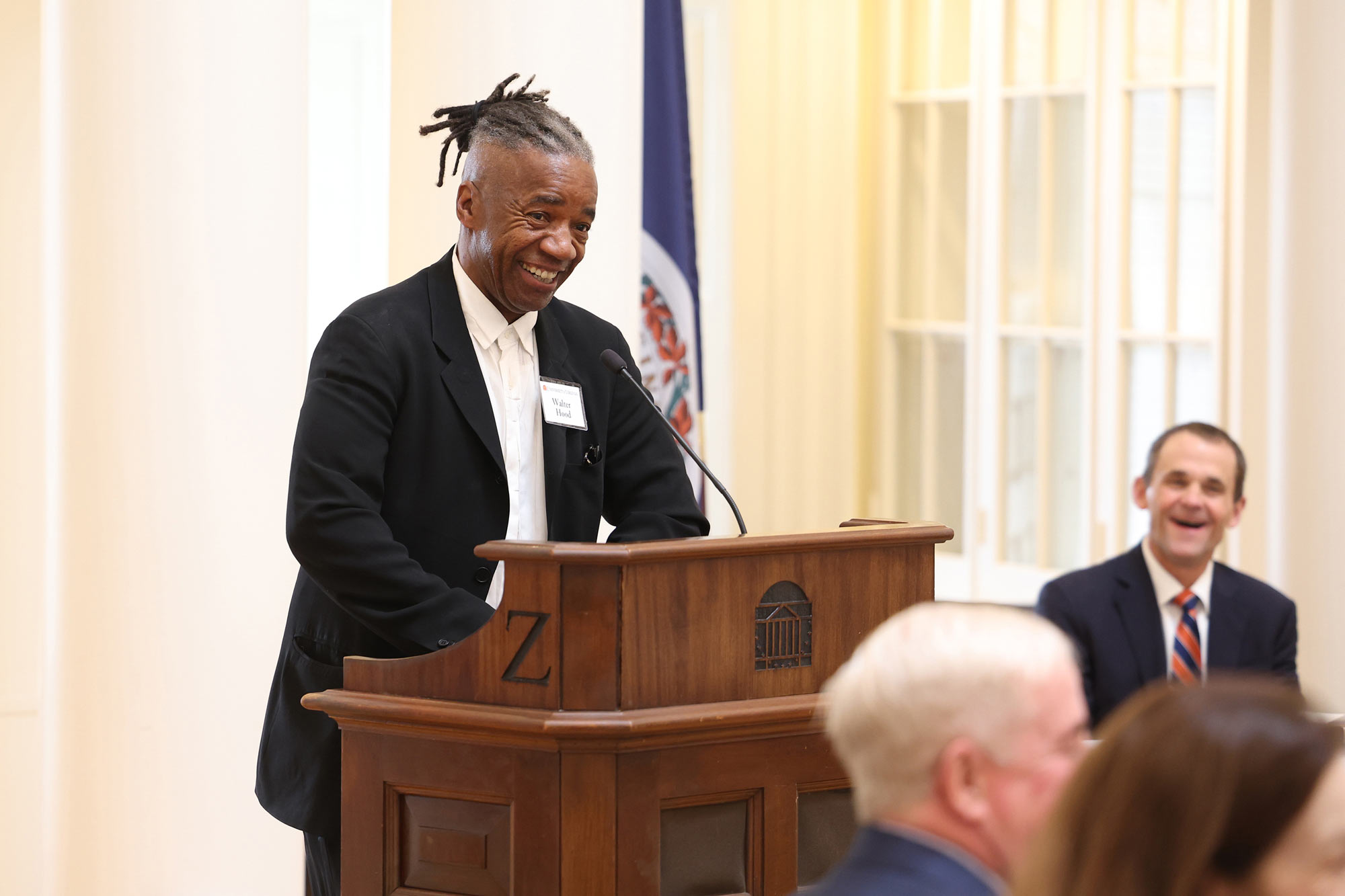
Hood speaks about his connection to the University, including installing a “shadow catcher” to honor the life and history of an African American seamstress who lived on Grounds. (Photo by Matt Riley, University Communications)
“As I started to look forward to this day, I was thinking about Thomas Jefferson’s view of citizen lawyers, and lawyers who could take into account and be dedicated to the ‘public virtue,’ which today we would call the public good,” he said. “And although I feel great honor and humility in receiving this award, when I look at the list of lawyers who have gotten this award in law before, they are public figures. They are people who are out in the community, doing amazing things in their profession.”
The citizen leadership medal was presented to another lawyer, Bryan Stevenson, whose work defending the poor, incarcerated and condemned was the basis of his New York Times bestseller, “Just Mercy,” and later an HBO documentary.
He recounted how he grew up poor, but how his mother and grandmother instilled in him the value of education. His mother went into debt to buy the family a set of World Book Encyclopedias. That love of learning directed Stevenson to college and then to law school, where he was unlike most of his well-connected classmates at Harvard University.
“I told my classmates that I am at this law school because I have been raised up by generations of hopeful people: enslaved people who had a hope of freedom, terrorized people who had a hope of security, segregated people who had a hope of justice,” he said. “And their hopes have brought me here, and because of that, I’m standing on the shoulders of so many generations of hopeful people.”
